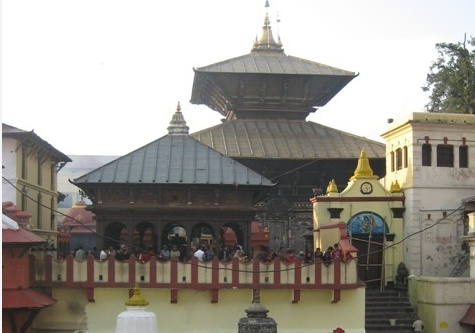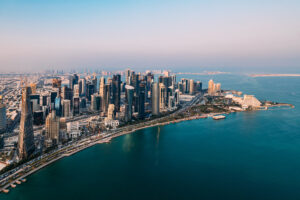A model pilgrimage site for millions

By Ramesh Tiwari ——-
Pilgrimage/ religious tourism is on the increase with a growing number of people visiting holy sites and historical places. Academicians see a distinction between religious tourism and pilgrimage. “Pilgrimage is when people set out on a journey to visit a place associated with a holy event in order to deepen their relationship with God. Religious tourism is when people go on holiday or on a day trip to visit shrines because they are primarily interested in history or architecture but in so doing may learn something of the tradition and faith”, opines Bishop Dominic Walker.
The BBC in recent years enlisted 10 world sites of religious pilgrimage as follows : birthplace of Lord Buddha, Lumbini (Nepal); home of the Pope and centre of the Roman Catholic Church, Vatican City (surrounded by Rome, Italy); birthplace of the Protestant Reformation-Wittenberg (Saxony, Germany); birthplace of the Prophet Muhammad – Mecca (Saudi Arabia); the most important site of the Char Dham, the fourth Hindu Pilgrimage Centers — Badrinath (Uttarakhand, India); holiest place of worship for Sikhs –Golden Temple (Amritsar, India); the holiest of Jewish sites – Western Wall (Jerusalem, Israel); mausoleum of the founder of the precursor religion to the Baha’i Faith – Shrine of the Bab (Haifa, Israel); most sacred city for Jains – Palitana (Gujarat, India) and religious destination for four major religious groups of Buddhism, Christianity, Islam and Hinduism – Sri Pade in Sri Lanka. These sites of religious pilgrimage attract millions of visitors from all parts of the world each year.
As the international tourism market is expanding each year, there are hundreds of new destinations associated with religious and pilgrimage tourism in the world. The tour operators have developed special package for visitors aspiring to visit the places of pilgrimage worldwide. In this context, South Asia also attracts a large number of tourists in different religious and pilgrimage sites of this region, especially in the shrines located in Nepal, India and Sri Lanka.
Nepal is blessed with unique natural and cultural sites recognized by UNESCO as ‘World Heritage Sites’. The two natural sites enlisted in the world heritage sites are Chitwan National Park and Sagarmatha (Mt. Everest) National Park, whereas the seven cultural sites include – Durbar Squares of Kathmandu, Patan and Bhaktapur, the Buddhist stupas of Swayambhu and Bauddhanath, and the Hindu temples of Pashupatinath and Changu Narayan. These seven cultural heritage sites are within the periphery of 25 kilometers in Kathmandu Valley. Many visitors and travel writers have dubbed Nepal as a Land of Living Goddess, a Land of Temples and Home of Gods. A tourist visiting Nepal finds numerous Gods and temples in different parts of the country.
The most popular places of pilgrimage in Nepal are –Pashupatinath Temple, Gosaikunda, Devghat, Damodarkunda, Ridhighat, Muktinath, Janakpur, Barahachhetra, Balmiki Ashram, Manakamana, Lumbini, Swayambhunath stupa and Bouddha stupa. Besides hundreds of temples in Kathmandu Valley, there are many Shakti-peeths related to Goddess Durga in Nepal – namely Dakshinkali, Guhewsari, Pathivara, Shaileswori, Vindyavashini, Manakamana and more.
All deities are worshipped by both of the Hindu and Buddhist communities with equal reverence and feasts. As religious tolerance is one of the attractive features of the Nepali Society, Hindus and Buddhists including other religious communities live in peace and harmony. Being a popular pilgrimage centre of South Asia, Nepal is also a land of festivals with celebration being observed somewhere almost every day of the year.
From the time immemorial, Nepal is a destination of Hindu pilgrims from India and other parts of the world as it happens to be the land of Lord Pashupatinath. Hinduism is the world’s third largest religion after Christianity and Islam with more than 1 billion followers (about 15% of the world’s population) all over the world.
The Pashupatinath temple, dedicated to Lord Shiva, is situated on the bank of Bagmati river and lies about five kms east of Kathmandu near Tribhuwan International Airport. Pashupatinath temple is the centre of Hindu pilgrims around the world on the day of Maha Shivaratri. The two tiered golden temple of Lord Shiva is one of the finest example of Nepali architecture. Hundreds of Sages (Sadhus) from different parts of Nepal and India visit Pashupatinath during Maha Shivaratri festival and thousands of devotees take ritual baths in the Bagmati river and observe a fast for the whole day during Maha Shivaratri and Teej festivals.
The area of Pashupatinath encompasses 264 hectre of land covering places like Devpatan, Jayabageswari, Gaurighat, Gaushala and Sleshmantak area with more than 492 temples, sattals, chaitya and monuments besides more than 1000 Shiva Lingas. Regarded as the most sacred Hindu temple in the world, the temple stands as a symbol of faith, religion, culture and tradition.
Pashupatinath temple is believed to be built by Supus Padeva, a Lichhavi king who according to the stone inscription erected by Jayadev II in the courtyard of Pashupatinath in 753 AD., happened to be the ruler 39 generation before Man Dev (464-505 AD). The area has been developed, maintained and preserved since 1297 AD under patronage of erstwhile rulers, when the famous roof was added in the temple. Pashupati temple, the master of all living beings of the universe, is said to be constructed in the fifth century and later renovated by different Malla Kings. A gold plated roof, four silver doors, wood carvings of the highest quality and artistic styles decorate the pagoda temple of Pashupatinath. Only Hindus are permitted inside the Pashupatinath courtyard and the banks of Bagmati river, behind the temple, are used as cremation sites for Hindus. Guheshwori temple and several Shivalayas in the Sleshmantak forest area on the eastern hilltop of the temple are other pilgrim sites of the area.
The priests were recruited from Brahamins in South India since 1746 AD, when the then king of Kathmandu Pratap Malla appointed the South Indian Priests in Pashupatinath. There are four Bhatta priests and 106 Newars as Bhandaris (store keepers and protectors) in Pashupatinath temple. The new government of Federal Republic of Nepal in May 2009 issued a regulation enabling Nepalese citizens and others to become priests of the temple ending the centuries old monopoly of Sound Indian Brahmins, but it could not be implemented due to controversy in Nepal and India. The Pashupati Area Development Trust (PADT), a separate autonomous body established in 1990, looks after the management of the area.
Though the Pashupatinath temple was listed as a UNESCO world heritage site in 1979, the area was encroached and has to face negative effects of urbanization and commercialization. The state of Pashupatinath temple area is miserable even these days. Bagmati river is most polluted and the efforts to clean sacred Bagmati river are limited only in publicity and propaganda. It is said that drainage recycling centres are being established in many areas of Bagmati river to clean polluted and dirty water of Bagmati flowing in the lower banks of Pashupatinath but the problem has not been solved.
The concrete structures in the vicinity of Pashupatinath are causing deforestation in the area. Though the illegally built houses in the heritage site are demolished recently, much has to be done to develop Pashupatinath temple as a pilgrimage centre. Political interference, misuse of donations offered by the devotees, lack of management planning and apathy of the concerned government agencies are major causes of plight of the world heritage site.
Millions of Rupees is misused due to lack of specific regulation and transparency of monetary offerings since a long time. Earlier the temple priests – Bhatta and Bhandaris used to divide the collected money among them, now they are provided fix salaries. The yearly income of Pashupatinath is estimated to be at least Rs. 50 million this year in accordance with the present daily earning of Rs. 135000 offered by the devotees. It means that billions of Rs has been misused by the priests earlier.
As the PADT has focused for transparency of monetary offerings of the temple, the priests and Bhandaris are reluctant to provide satisfactory services to the devotees, who pay huge money for special worships in the temple. The tourists are charged NP Rs 500 for entrance in the Pashupati area (non-Hindus are not allowed to enter the temple of Pashupatinath), but they are not given even an information brochure for visiting the sacred area. Internet worshiping at the Pashupatinath temple is limited only in publicity of PADT.
A long-term planning and vision for development of Pashupatinath temple area is necessary, so that Pashupatinath temple could also be model pilgrimage sites for millions of Hindus like other pilgrimage destinations of neighboring India.
November 2023















